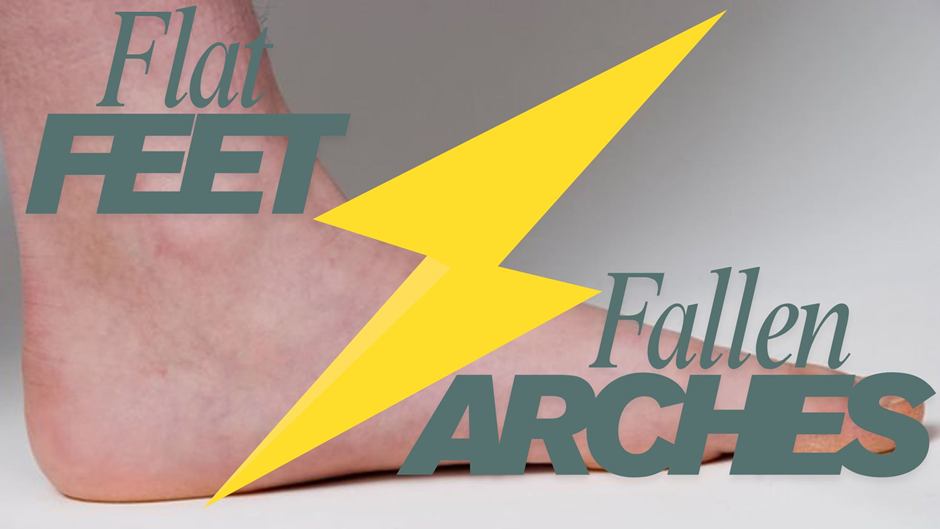How to Get Orthotics Covered by Insurance - A Detailed Guide
To get orthotics covered by insurance, verify that your policy covers the type of orthotics you need, get preauthorization where applicable, get proper documentation from your healthcare provider, use correct billing codes, get your device from in-network providers, and, if denied, appeal with proper documentation.
🦶 Orthotics Coverage Checker
Key Takeaways
- While many insurers claim to offer coverage for orthotics where medical necessity is proven, the terminologies may not mean what you think. Verify with the insurer what devices fall under orthotics, and what it considers a medical necessity.
- The medical necessity requiring the orthotics must be well-documented for presentation. Attaching other supporting documentation, like prescriptions, charts, and test results, can improve your chances of getting approved.
- Using the correct billing code is essential. Using the wrong code can lead to a denial, delay, or even an audit.
- Every patient's case will be treated differently. So, that one person's case was approved does not automatically mean that another's will also be approved.
- You can appeal a denial and get a decision reversal once you have the right documentation and can show that the first decision was wrong.
Understanding Insurance for Orthotics
While on the surface, many insurance companies may appear to cover orthotics, there are provisions in the “fine print” that can make the claims process more difficult than it ought to be.
Insurance companies that cover orthotics only approve claims for certain types of orthotics required as a medical necessity. Unless medical necessity is proven for the types of orthotics approved, the claim will be denied.
To clear up any confusion you may have about insurance companies and how they decide whether to approve or deny claims, we will explain the types of orthotics and what insurers view as medical necessity. Understanding this will help you know what claims to make and how to make it stick. You will also know how to appeal if your claim is denied.
Orthotics and the Different Types
Orthotics cover a wide range of devices that are designed to provide support, alignment, and improved functioning of the body's biomechanics. Some common examples of medical devices that fall under this category include:
- Shoe Inserts - These are used to provide foot alignment, shock absorption, comfort, and pain relief from common foot conditions.
- Ankle-foot Orthoses (AFOs) - These devices stabilize the ankle and foot and are often used for patients with cerebral palsy, those recovering from stroke, or those with drop foot.
- Knee Braces - These types of braces will provide support and alignment for patients with instability, ligament injuries, or arthritis.
- Spinal Orthoses - These are back braces meant to provide support for cases like spinal fractures or scoliosis.
- Wrist and Hand Orthoses - These are used after injuries or surgery or for cases like carpal tunnel syndrome.
The above are some of the more common examples of devices that fall under orthotics. All of these may not be covered by an insurer. You should, therefore, know the exact types that are covered.
How Insurers Define Medical Necessity
According to the National Association of Insurance Commissioners, what insurance companies regard as medical necessity, or medically necessary, will include health care services that meet the following criteria:
- Provides for the diagnosis, treatment, cure, or relief from a disease, illness, injury, or health condition. This will not include trials, experimental treatments, or processes used for investigational or cosmetic purposes.
- Is required, and necessary for the diagnosis, treatment, cure, or relief from the symptoms of a health condition, disease, injury, or illness.
- Falls within the standards accepted within the medical community.
- Its main purpose is not to offer convenience to the insured or the family of the insured.
With regard to orthotics, insurance companies have different variations of these criteria that orthotics must meet to be regarded as a medical necessity. You, therefore, need to study the criteria as set forth by each insurance company.
In the next section, we will break down the steps you should take to increase your chances of having your claims approved. We will also make some specific references to some insurance companies for more clarity.
Step-by-Step Guide for Getting Insurance Cover for Orthotics
Getting insurance cover for orthotics can be tricky, especially given the sometimes confusing requirements that some insurance companies list in their policy document. You can, however, increase your chances of having your orthotics covered if you follow the steps we will be discussing below.
Step 1 - Understand the Policy Coverage
Before buying any policy, take some time to fully understand what is covered and the criteria for the cover. It is not enough to just note that orthotics are covered.
For example, Medicare covers orthotics. However, you will only be eligible for the cover if your foot condition is diabetes-related. It is also stated clearly that by law "Medicare can’t make a payment for an orthosis that isn’t a brace for the leg, arm, back, and/or neck."
It is, therefore, important that you know the types of orthotics covered and what is considered medical necessity. It is advisable to call the provider and ask for clarification.
Do not just take the word of the rep for it; ask to see the page or section of the policy document confirming whatever answer you are given. You can also ask to be sent an email confirmation, which you can present as evidence in the future.
This is the point where you get all the information you need, including whether or not the services covered by the Healthcare Common Procedure Coding System (HCPCS) codes L3000 - L3031 are covered. You should also find out if preauthorization is required for these services. Ensure that you keep the records of these conversations.
Step 2 - Seek Preauthorization Where Applicable
If you have a plan that requires preauthorization for orthotics, then be sure to get it before proceeding. Preauthorization is a practice, also known as, prior authorization, where the approval of the insurance company is gotten before getting the device or service. That means getting in touch with your insurer and informing them of your need for orthotics, with supporting information.
Insurance companies like Aetna, United Healthcare, Cigna, Blue Cross Blue Shield (BCBS), and services like VA Healthcare, and Medicare, all require preauthorization for they types of orthotics that qualify for their cover. This step clarifies the position of your insurer before you even go for the othortics, which eliminates any confusion. You can, of course, appeal their decision if the preauthorization is denied.
Step 3 - Provide Complete Documentation
At this point, you’ve already gotten your cover, and you now want to make a claim. The first thing you need to do is get all the necessary documentation to show medical necessity. Some of the documentation that will help you prove medical necessity include the following:
- A Doctor's Prescription or Order - This will show that the device was prescribed by a doctor. It will also specify the type of orthotic required.
- A Letter of Medical Necessity - This letter, in addition to the prescription, will show the reason behind the prescription. It will explain the diagnosis following a thorough investigation, it will show the functional limitations that warrant the need for orthotics, it will state previously tried treatment options, which further make orthotics an essential option.
- Progress and Chart Notes - Insurance companies know that any physician can just write a prescription, including a letter of medical necessity. You can, therefore, support the documents above with the records of your visits to the doctor, the progress, and chart notes, evidence of other treatment attempts, and any relevant findings.
- Diagnostic Test Results - Be sure to include the results of any tests or scans that were done in the course of the consultation and treatment. These will further lend credence to your claim.
- Doctor's Credentials and Professional Affiliations - Some insurance companies like Aetna, require that the professional providing the orthotics be affiliated and in good standing with organizations like the Board of Certification/Accreditation (prosthetics, orthotics), the American Board for Certification (orthotics, prosthetics, pedorthics) (ABC), or be duly licensed by the state in which they are providing the service.
- Provider Documentation - For insurance companies that have providers of orthotics as part of their in-house network, showing that your provider is part of this network will increase your chances of being approved.
Step 4 - Use the Correct Billing Code
This is one of the most common reasons why claims are denied. You should be sure to use the correct HCPCS code (L3000 - L3031). These codes tell the insurer exactly what service was rendered or what device is referred to in your claim. Using the wrong can result in automatic denials with insurance that make use of automated processing systems. Wrong codes can also lead to lower claim payouts.
In addition to the above, using the wrong code can lead to suspicions of fraud. You are basically filing a claim for something you’ve not received. While this may have been done in error, it may lead to an audit, or at best, a delay in payment. You should therefore ensure that you use the correct code.
One way to avoid errors like these is by using in-network providers where possible. When you use in-network providers, they file the claim on your behalf, reducing the risk of wrong codes being used and increasing your chances of having your claim approved.
The steps described above will help increase your chances of getting approved.
How to Appeal If Your Claim is Denied
An appeal is not just a letter asking the insurer to reconsider; it is a call to the insurer to abide by the terms stipulated in their policy document. You are basically saying that they are wrong and you are right.
To convince the insurer that they were wrong in their decision to deny your claim, you must present a strong argument, backed by sufficient evidence. This means proving beyond any reasonable doubt that your claim ought to be approved.
To achieve this, the following steps will help:
- Get the letter of denial from the insurance company, noting the reason for denial.
- Get a letter of medical necessity from your health care provider, showing exactly why you need the orthotics. The letter should also show previously tried treatments that necessitated the need for orthotics.
- Include supporting documentation like diagnostic test results, scan results, chart notes, and documentation of failed conservative treatment plans undertaken.
- Citing the policy document, show where your case is covered, the criteria required, and how you have met these criteria.
Submit your appeal with this supporting documentation, and you will drastically improve your chances of the decision being reversed in your favor.
Conclusion
Orthotics, especially custom orthotics, can be expensive, so it is helpful when an insurance plan can take on part of the cost. The steps we’ve listed above are simple but critical to ensuring a low chance of having your claims denied.
Remember to begin by studying the policy thoroughly and noting the aspects of the policy document that have to do with orthotics. Understand the types of orthotics covered and what the insurer considers a medical necessity.
You should also take documentation seriously. Ensure that your provider supplies you with all the documentation listed above as this will make the claims process easier. Do not forget to use the correct billing code to avoid complications that could lead to denials, delays, or audits.
You can improve your chances of getting your orthotics covered by insurance if you understand and follow the steps we’ve shared with you in this article.




